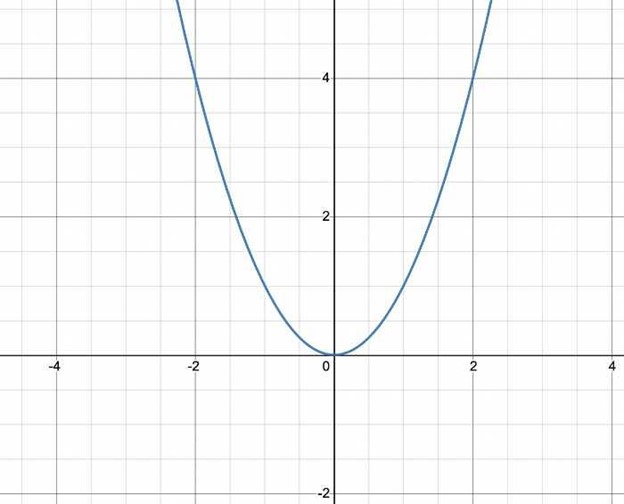One to One Functions - Graph, Examples | Horizontal Line Test
What is a One to One Function?
A one-to-one function is a mathematical function whereby each input corresponds to just one output. In other words, for every x, there is just one y and vice versa. This means that the graph of a one-to-one function will never intersect.
The input value in a one-to-one function is known as the domain of the function, and the output value is noted as the range of the function.
Let's study the images below:

For f(x), any value in the left circle corresponds to a unique value in the right circle. In the same manner, any value on the right side corresponds to a unique value in the left circle. In mathematical terms, this signifies every domain has a unique range, and every range has a unique domain. Therefore, this is an example of a one-to-one function.
Here are some additional representations of one-to-one functions:
-
f(x) = x + 1
-
f(x) = 2x
Now let's study the second example, which shows the values for g(x).
Pay attention to the fact that the inputs in the left circle (domain) do not own unique outputs in the right circle (range). For instance, the inputs -2 and 2 have the same output, in other words, 4. Similarly, the inputs -4 and 4 have equal output, i.e., 16. We can discern that there are equivalent Y values for many X values. Thus, this is not a one-to-one function.
Here are some other representations of non one-to-one functions:
-
f(x) = x^2
-
f(x)=(x+2)^2
What are the characteristics of One to One Functions?
One-to-one functions have the following characteristics:
-
The function owns an inverse.
-
The graph of the function is a line that does not intersect itself.
-
It passes the horizontal line test.
-
The graph of a function and its inverse are identical concerning the line y = x.
How to Graph a One to One Function
In order to graph a one-to-one function, you are required to figure out the domain and range for the function. Let's look at an easy example of a function f(x) = x + 1.

Immediately after you possess the domain and the range for the function, you have to graph the domain values on the X-axis and range values on the Y-axis.
How can you tell whether or not a Function is One to One?
To test whether or not a function is one-to-one, we can leverage the horizontal line test. As soon as you chart the graph of a function, draw horizontal lines over the graph. If a horizontal line passes through the graph of the function at more than one point, then the function is not one-to-one.
Due to the fact that the graph of every linear function is a straight line, and a horizontal line does not intersect the graph at more than one place, we can also conclude all linear functions are one-to-one functions. Don’t forget that we do not use the vertical line test for one-to-one functions.
Let's study the graph for f(x) = x + 1. Once you chart the values of x-coordinates and y-coordinates, you need to review whether or not a horizontal line intersects the graph at more than one point. In this case, the graph does not intersect any horizontal line more than once. This indicates that the function is a one-to-one function.

Subsequently, if the function is not a one-to-one function, it will intersect the same horizontal line more than once. Let's examine the figure for the f(y) = y^2. Here are the domain and the range values for the function:

Here is the graph for the function:

In this instance, the graph crosses multiple horizontal lines. For example, for each domains -1 and 1, the range is 1. Similarly, for each -2 and 2, the range is 4. This implies that f(x) = x^2 is not a one-to-one function.
What is the inverse of a One-to-One Function?
Considering the fact that a one-to-one function has just one input value for each output value, the inverse of a one-to-one function is also a one-to-one function. The opposite of the function basically reverses the function.
For Instance, in the event of f(x) = x + 1, we add 1 to each value of x in order to get the output, or y. The inverse of this function will subtract 1 from each value of y.
The inverse of the function is denoted as f−1.
What are the properties of the inverse of a One to One Function?
The characteristics of an inverse one-to-one function are the same as any other one-to-one functions. This implies that the opposite of a one-to-one function will possess one domain for every range and pass the horizontal line test.
How do you find the inverse of a One-to-One Function?
Determining the inverse of a function is not difficult. You simply have to switch the x and y values. For example, the inverse of the function f(x) = x + 5 is f-1(x) = x - 5.

Considering what we learned previously, the inverse of a one-to-one function reverses the function. Considering the original output value showed us we needed to add 5 to each input value, the new output value will require us to subtract 5 from each input value.
One to One Function Practice Examples
Contemplate the following functions:
-
f(x) = x + 1
-
f(x) = 2x
-
f(x) = x2
-
f(x) = 3x - 2
-
f(x) = |x|
-
g(x) = 2x + 1
-
h(x) = x/2 - 1
-
j(x) = √x
-
k(x) = (x + 2)/(x - 2)
-
l(x) = 3√x
-
m(x) = 5 - x
For each of these functions:
1. Determine whether the function is one-to-one.
2. Chart the function and its inverse.
3. Figure out the inverse of the function mathematically.
4. State the domain and range of each function and its inverse.
5. Use the inverse to determine the value for x in each calculation.
Grade Potential Can Help You Learn You Functions
If you happen to be facing difficulties trying to understand one-to-one functions or similar concepts, Grade Potential can connect you with a 1:1 tutor who can support you. Our Winston-Salem math tutors are skilled educators who support students just like you enhance their skills of these subjects.
With Grade Potential, you can learn at your own pace from the comfort of your own home. Plan an appointment with Grade Potential today by calling (336) 439-3422 to get informed about our teaching services. One of our consultants will call you to better inquire about your requirements to set you up with the best teacher for you!



